
What we’ve been reading
 Nicola Bell
Nicola Bell
‘Fun and murder-y’ is a literary genre that I really enjoy, and I’ve been reading a lot of that type of book lately. One was The Bullet That Missed by Richard Osman. It wasn’t my favourite in the Thursday Murder Club series, but I still really liked it and am keenly anticipating the release of Osman’s next book. Another one was The Woman in the Library by Sulari Gentill. The structure of this book was interesting and difficult to describe. It alternated between chapters of a murder mystery and correspondence from an increasingly attached fan of the murder mystery’s author. Though complex, it worked for me.
I sped through the book because I couldn’t wait to see the resolution of both plots. The Satsuma Complex by Bob Mortimer was another fun read, although I must admit that it was at times just a little too Bob- Mortimer-ish. The final book I read in this genre was Everyone in My Family Has Killed Someone by Benjamin Stevenson. This one felt the most like an interaction. Throughout the story, Stevenson has his narrator explicitly invite readers to guess at the murderer, which I found both infuriating and compelling. (No, I did not guess correctly.)
For something completely different, I am halfway through reading Kenneth Grahame’s The Wind in the Willows to my 6-month-old. Boy, its syntax is a lot more complex than I remember from childhood! I’m lucky to have such a forgiving audience; he doesn’t complain too loudly when I awkwardly stumble over the many, many, many clauses.
 Ying Sng
Ying Sng
I like books that tell a story. Something with a plot. Preferably one that has a happy ending. I don’t think that’s too much to ask. This self-realisation came to me when I finished reading Horse by Geraldine Brooks. Please don’t be put off, it’s an awesome book. Her writing is beautiful and the way she weaves different narratives across three different centuries around a character (OK, it’s a racehorse!) from history is amazing but the ending to Horse was like a punch in the stomach that I hadn’t steeled myself for. I don’t care for horseracing and know nothing about horses except that they are magnificent to behold but I was invested in this horse and the characters around it. If you have read it, let me know what you thought. Hopefully this bereft feeling will have left me and I’ll be ready to talk about it.
My book group does a Kris Kringle with books that get circulated between all of us. The Seven Skins of Esther Wilding by Holly Ringland was one of them. It’s a story of loss and a gentle retelling of how different people process grief. I’m not familiar with selkie folklore but I loved how it was incorporated into the story and I’m keen to find out more. Although there were moments when I found the main character a bit annoying, I would ration the number of pages I read each time I picked the book up. It was almost like I wasn’t ready for the story to leave my life.
I also read a couple of tiny books. The first was Cold Enough for Snow by Jessie Au. This book wasn’t what I was expecting. It was beautifully written and a poignant commentary of her relationship with her mother. Was it because I was expecting a story with a plot? Maybe. I think this is a book I’ll try to revisit later.
The other tiny book I read was Small Things Like These by Claire Keegan. I don’t know how the author managed to convey so much in so few words. Seriously, you could read the whole book before your cup of tea gets cold! The central character was a middle-aged, Irish coal merchant with five daughters.
Apart from being middle-aged, I have nothing in common with him but as I read the words on the page, I felt all his emotions and his gratitude for what he had. Nothing was ever explicitly stated but Claire Keegan’s words painted a series of haunting pictures that remain in my mind.
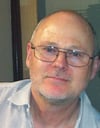 Mark Carter
Mark Carter
One of the reasons I prefer non-fiction is that reality is often more bizarre than anything that somebody can make up, with the bonus of being real. I am a casual reader of popular books on quantum mechanics. To be clear, I don’t actually understand quantum mechanics, except by analogy. Nevertheless, I find it fascinating that the quantum world operates in a totally different way to the macroscopic world that is familiar. My most recent read was Quantum Physics by Michael G. Raymer. The book is a little heavy-going and not recommended as your first foray in the area but, if you stick with it, gives detailed and clear explanations of some very complex issues. These include an eloquent explanation of how quantum phenomena can exist as both particles and waves, as well as how quantum cryptography can be used to generate virtually uncrackable encryption. The latter is certainly prescient given the seemingly endless series of recent online data leaks. However, is reality really stranger than fiction? To test the proposition, I decided to stroll into the unfamiliar world of fiction. A good starting point seemed to be Lewis Carroll’s classics, Alice’s Adventures in Wonderland and its sequel Through the Looking- Glass, and What Alice Found There. Yes, I do realise they are children’s books but I had sound justification. First, books on quantum physics frequently use the Alice series as their go-to analogy to illustrate the weirdness of the very small. Second, children’s books seemed like a good place to start as they are not necessarily constrained by adult notions of how the world should work. Finally, I did not read much fiction as a child. I was far more interested in things that were real, like Bigfoot, ESP, UFOs and the Loch Ness Monster.
And no, the profound irony is not totally lost on me. So how strange is Alice’s imaginary world? For a start, mathematics appears to be badly broken. Multiplication does not work in Wonderland and two eggs cost less than one in the Looking Glass. What can you expect when the shopkeeper is a sheep? Unfortunately, I have listened to a professor of mathematics education arguing that maths is just a social construct, such that 2 + 2 does not necessarily equal four, using disturbingly similar examples to Carroll, with the addition of some tortured logic. Sadly, the broken maths in Alice’s world is also present in the real world, at least according to some.
There is also a queen who believes six impossible things before breakfast. I’m sure that at some point in my life this would have seemed bizarre but, as a casual observer of U.S. politics over the past several years, colour me unimpressed. Carroll also describes a delightful menagerie of talking animals. Admittedly, the sheer variety of conversing critters was impressive, but talking animals are not exactly unheard of – some parrots have impressive vocabularies. In addition, recent research suggests that chimpanzees may possess some basic syntax and can produce complex vocal sequences. (Feel free to insert your own joke about politicians here.)
Then there is that cat that periodically disappears. Even this has parallels in nature, with transparent sea creatures and those that use camouflage to become practically invisible. In the quantum world, Schrödinger’s famous cat lives in a superposition of being dead and alive, in some sense being simultaneously both fully dead and fully alive, at least until some feline ambivalent passer-by opens its box. The weirdness of quantum superposition means that tiny phenomena, like electrons, exist as a probability cloud and are only forced to be somewhere specific(ish) when observed. In this case, I think quantum mechanics has the edge in weirdness.
On a personal note, I enjoyed the whimsy of the Alice books a lot more than I thought I would and occasionally found myself laughing aloud. But, based on this sample at least, reality remains more bizarre than fiction. There was, however, something weird about the Alice books. I am normally platform agnostic and don’t really mind how I consume information, switching freely between audiobook, e-book and dead tree versions. However, in the case of Alice’s adventures, I enjoyed reading much more than listening, and the paper versions, retrieved from decades of storage in a garage, somehow seemed to impart more enjoyment. Perhaps reading old texts is enhanced by a slightly musty smell? Not really bizarre, but most certainly a bit odd.
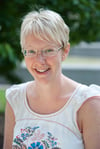 Anna Desjardins (Notley)
Anna Desjardins (Notley)
I began the year with The Lincoln Highway by Amor Towles. This is completely different from his bestselling A Gentleman in Moscow, but no less absorbing. Amor Towles has a knack for capturing characters’ voices in a way that lifts the story off the page and puts it right in front of you. And this story is full of 1950s American characters to sink your teeth into – small-town Mid-Western farmers, sheriffs and salesmen; young ruffians, charlatans and train stowaways; the orphaned and the abandoned; the privileged and the pampered; the disappointed, the destitute, and the dreamers. On one 10-day journey down the Lincoln highway, you’ll meet them all, and become truly invested in the lives of the four main characters who share that fateful drive in an old blue Studebaker. Do read it.
I then moved on to Circe, my first taste of Madeline Miller (although I also have The Song of Achilles waiting to be read on my bookshelf). This just hit the spot in terms of reinventing Greek mythology for modern times. Miller invests the gods she writes of with great humanity, bringing an immediacy and relatability to the stories she tells and embellishes. Of course, the idea of retelling ancient myths is not novel, but it is rare to find it so well done that the language is both fresh and accessible, while retaining a lyrical quality that honours the source material.
Over this time (and truth be told, for many months prior), I had been stopping and starting All That I Am. I bought the book last year at an evening in conversation with Anna Funder hosted by my son’s school, inspired by Anna’s insightful discussion of her experiences writing modern historical fiction and non-fiction. But suffice to say, it failed to immediately grab me. I think the chopping and changing of time frames and narrators, who were not yet linked together in any clear way in the early chapters, made it difficult to find an entry point into the story. But thankfully, I persisted, because once the chapters moved close enough in time to begin telling essentially the same story from two different viewpoints, it was a gripping read and an eye-opening window into the real-life experiences of exiled German intellectuals in London during World War II. Upon finishing it, I wanted to reread the beginning to get a ‘clear run’ at the whole story, but somehow that hasn’t happened. Maybe that beginning just isn’t for me!
Most recently, I signed up to two book club sessions in my local community. For one, I have just enjoyed reading Elizabeth Strout’s Lucy by the Sea. I’m not sure I was quite ready to read about the recent years of the pandemic, as lived through by the characters in this book from New York – it’s all still a little too close for comfort! But I certainly appreciated the way Strout elevates what we might call ‘ordinary lives’ into story material – no epics required; every human story is full of weight. And appropriately on that note, for the other book club, I was asked to read Tell Me Again by Amy
Thunig. This is a memoir, a genre I wouldn’t normally pick up of my own volition, but I was interested in checking out the Arts and Cultural Exchange of Parramatta who were hosting the discussion, so I dutifully got the book and I’m so glad I did. In just a few short, selected episodes from her childhood and early adulthood, Amy weaves her current and past selves together, welcoming readers into a circular notion of time. More stories like this need to be told to give us all a better understanding of what growing up as an Aboriginal child in Australia can be like and to hopefully open the conversation around moving forwards together.
Finally, if you are looking for something fun to read with a primary school aged child, do run out and get The Adventures of Nanny Piggins by R. A. Spratt. We are currently working our way through the series, and have been enjoying a chapter a night, following the exploits of three young children and their glamourous nanny (the world’s most famous flying pig). There is nothing Nanny Piggins can’t do, and the read aloud potential is unparalleled. When not dissolved in fits of giggles, I am currently perfecting my Russian bear and Latin American armadillo voices.
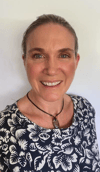 Siobhan Merlo
Siobhan Merlo
Yesterday, with my newborn grand-baby-in-law asleep on my lap, I finally finished This Other Eden by Paul Harding. This beautifully crafted book captures the perspectives and daily lives of the inhabitants of a small island off the coast of Maine on the cusp of the 19th century, who, due to their race and various ‘differences’, had been ‘othered’ by the society of the time. A small community, they coexisted in peace for a century until a Christian preacher, in the spirit of trying to ‘help’, reported the situation to the authorities, recommending that something needed to be done. With the eugenics movement gaining momentum, this led to the eviction of the community from the island, the deaths of some and institutionalisation of others. Although a tragic story, I enjoyed this book for the empathy the author created with the characters, the exceptional imagery, and the obvious research the author has done to bring the story and characters to life. In essence, Paul Harding has provided a ‘voice’ to the people who could not speak their truths, even if it is many years after the fact. If you love history as I do, and enjoy extending your vocabulary too, this book is well worthwhile.
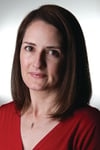 Jennifer Buckingham
Jennifer Buckingham
My younger daughter is doing the Higher School Certificate (final year exams) later this year so I decided to read some of her HSC texts. Hag-Seed is Margaret Atwood’s take on The Tempest, drawing on the theme of cold revenge and with a cast of duplicitous and comical characters. Like all of Atwood’s work, it is highly imaginative and somewhat disturbing but an enjoyable read. My daughter loved Hag-Seed, binge-reading it in less than two days and she has now bought more of Atwood’s books. Another HSC text I read was Kazuo Ishiguro’s intriguing novel An Artist of the Floating World. Ishiguro received the Nobel Prize for Literature in 2017 but I haven’t read any of his books before. An Artist of the Floating World is written in a style intended to mimic an English translation of a Japanese text even though it was written in English. Once I knew that fact, it seemed to make it easier to read. I don’t know why this shift in perception made a difference; maybe I need to study HSC English again. The book is set in post-World War II Japan, with the protagonist coming to terms with the ways in which his nationalist propaganda artwork during the war influenced events and continues to affect his life and family. This book piqued my interest in Ishiguro so I went on to read another of his books, Never Let Me Go, a dystopian novel about a group of young people who have been cloned and raised separately from the rest of society for the purpose of providing organs to the ‘normals’ who need transplants. I’m planning to read more of Ishiguro’s work. He has a subdued style that initially disguises the horror of the ideas he explores, revealing it slowly.
While I was in Edinburgh I wanted to read something fondly familiar set in Edinburgh. The choice between a book from Alexander McCall Smith’s Sunday Philosophy Club series (the Isabel Dalhousie books) or a Rebus book by Ian Rankin was decided by serendipity. I found the second Rebus paperback, Hide and Seek, in one charity shop and donated back to another one later. I didn’t embarrass myself by reading it at The Ox bar (Rankin’s local), though.
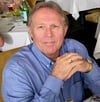 Kevin Wheldall
Kevin Wheldall
What have I been reading recently? My iPhone mainly! No, seriously, I must confess to my addiction which provides me with amazing content both personally and professionally. May I recommend Quillette, in particular, for excellent essays to be read as pro-science/reason antidotes to the rampant woke-ism in universities and elsewhere. Traditional academic rigour and respect for evidence is under serious attack.
As to recently read books, may I start with The Bookbinder of Jericho by Pip Williams. Readers who enjoyed her breakthrough novel The Dictionary of Lost Words will be very well satisfied by her follow up. It reeks (in a good way) of its historical period; one can almost smell the working-class heroine’s life on the barge and in the bindery. And her passion for reading almost anything that she can, quite literally, get her hands on as she works at the Oxford University Press is inspiring. A must read for bookish types.
First prize this time around, however, must go to Ian McEwen for his novel Lessons. An extraordinary book, it moves about a bit timewise, which in less accomplished hands could be irritating, but we are in safe hands here in another novel about the book world. Less well-written but nevertheless enjoyable was former spymaster, Stella Rimington’s The Devil’s Bargain. It is not on the same level as John Le Carré or Graham Greene in terms of literary style, but she makes up for this in her undoubted depth of knowledge of spooks and their world.
Finally, I have continued to delve into the life and works of William Morris, polymath extraordinaire. Arts and Crafts: An Illustrated Guide by Steven Adams was most enjoyable while How We Might Live: At Home with William and Jane Morris by Susan Fagence Cooper focuses on the mutually reinforcing, if somewhat complicated, relationship between Morris and his wife. Cooper makes a strong case for a consideration of Jane’s work and contributions in her own right but William’s sheer, multifaceted brilliance cannot help but put her in his shadow.
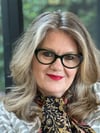 Robyn Wheldall
Robyn Wheldall
Faced with the task of creating or, more accurately, recreating a garden in the style of the Arts and Crafts movement, I was delighted to receive Gardens of the Arts and Crafts Movement (revised edition) by Judith B. Tankard for Christmas. This book, which is meticulously researched and beautifully presented with glorious photographs, reinforced my appreciation, yet again, of the non-fiction form. It seems hard for me to make a sustained shift away from non-fiction, notwithstanding the blandishments of my inspiring bibliophile colleague, Dr Alison Madelaine, who has been advocating strongly that I should do so – it would enhance and improve my life, she emphasises. I am sure she is right, but the ‘real stuff’ keeps hooking me in. (Shame on me, I hear you say!) Apart from educating me in the personalities that influenced, and the forms and styles that characterised, the gardens of the Arts and Crafts movement (a favourite subject of mine), was the discovery that even in the bucolic realm of gardens there were new professional tensions that arose in this period. Horticulturalists were protective of what they believed was their domain, whereas the architects had decided that the garden should be an extension of the home. The idea that the garden should have ‘rooms’ that flowed from the house, and therefore in the architect’s purview, encroached upon the outdoor space that traditionally was a matter for the horticulturalists. Spades clashed as the turf war raged (pardon the pun). Humans… wherever they are, in whatever discipline they work, will end up falling out. Even in the genteel province of the garden.
And humans will find things to disagree about even when it comes to pasta! This takes me to another book I recently really enjoyed, Taste – My Life Through Food by Stanley Tucci. What a gem this autobiographical book is. And there are recipes too! Tucci weaves endearing personal and sometimes heartbreaking details into his explanation of his life through food. I enjoyed reading about his experiences in pandemic lockdowns under the same roof as young adults, young children and the voracious appetites that had to be satisfied. We also learn about the transgression of pairing the wrong form of pasta with various sauces. No longer can I look at the penne pasta in my pantry as a universal ingredient. And is it really acceptable to break spaghetti before you pop it into a saucepan of boiling, salted water? (Personally, it seems obviously sacrilegious to me to snap spaghetti!)
Finally, Ann Patchett had me at the first sentence of her first essay of her collection, These Precious Days. For those who know me, they will understand the appeal of this opening, ‘Marriage has always proven irresistible to my family’. Enough said. The rest of the essay and the entire volume does not disappoint. Beautifully written and again generously autobiographical, Patchett’s collection has further confirmed my love of non-fiction. I will, however, endeavour to have some fiction titles to reflect on by the time of the next Nomanis.
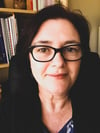 Alison Madelaine
Alison Madelaine
I love a good novel about art, and this time I read two: Woman on Fire by Lisa Barr and The Muse by Jessie Burton. The Muse was definitely one of my top reads for the year so far. As usual, I read some Aussie rural noir: Clarke by Holly Throsby and Exiles by Jane Harper. Neither were page-turners but still enjoyable enough. Halifax: Transgression (based on the TV series ‘Halifax’) possibly had the most brutal and graphic descriptions of murders of any book I’ve ever read. But despite my warnings, my 81-year-old mum still wanted to borrow it (and she read it too)!
Unlike Mark and Robyn, fiction is my preference, but being a member of three book groups sometimes has me picking up non-fiction. This time I read Nomadland: Surviving America in the 21st Century by Jessica Bruder and Between the Stops: The View of My Life from the Top of the Number 12 Bus by Sandi Toksvig, but the book I really enjoyed was With My Little Eye by Sandra Hogan. This was about an Australian family who worked for ASIO in the 1950s. From a very young age, the three children assisted their parents with various missions and kept many secrets, something that most young children would not be capable of doing. When her father died, the eldest daughter became convinced that he hadn’t really died, but was instead in deep cover on some secret mission. As they grew older, the three children were able to talk more freely about the life they had led as spies, resulting in this book being written.
This article first appeared in the September 2023 edition of Nomanis.